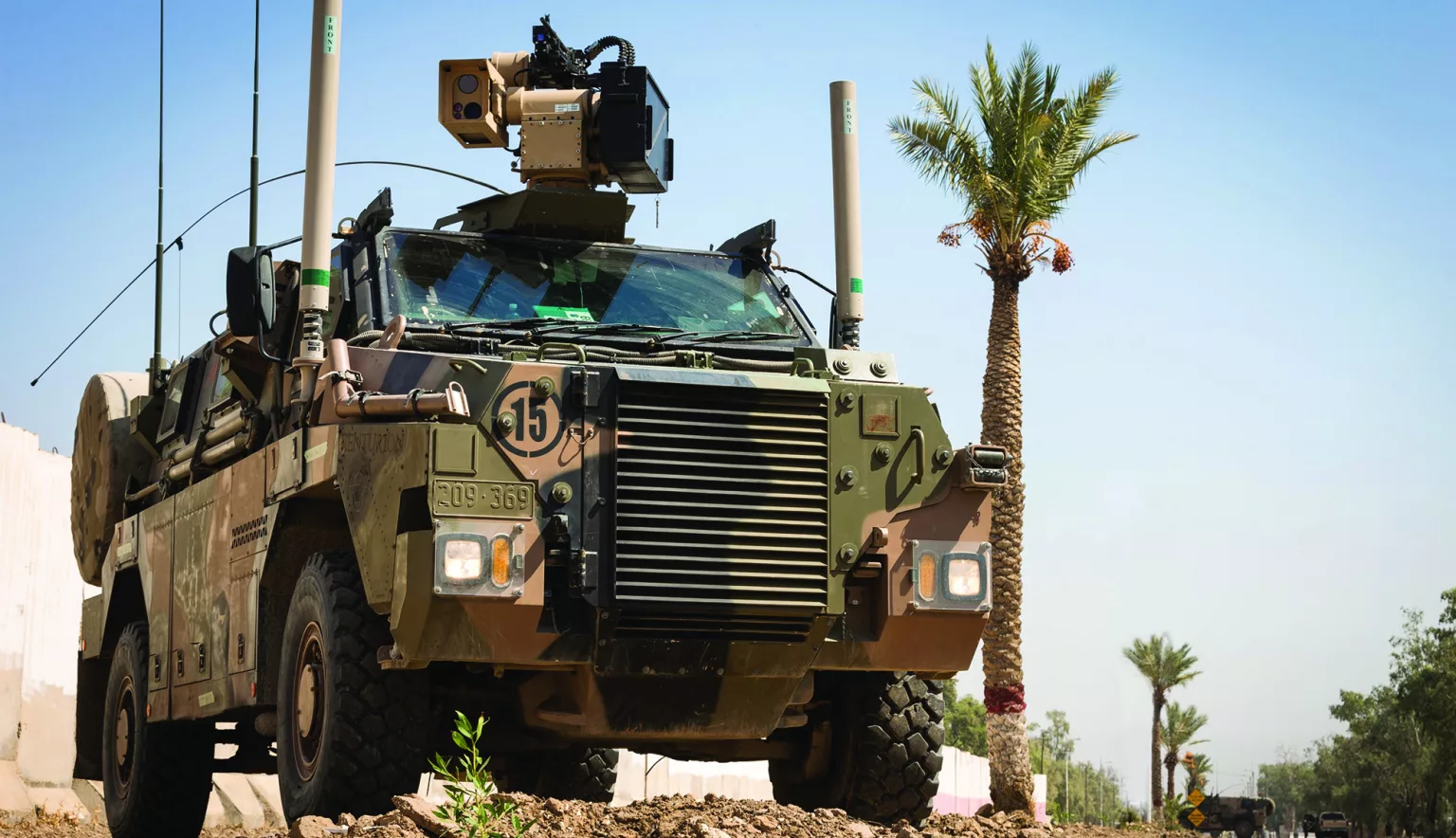Standing at the forefront of the Australian defence industry, we speak to Grant Sanderson, CEO of EOS Defence Systems, and discuss the company’s provision of advanced systems across the globe.
DEFENCE IN THE LAND DOWN UNDER
The defence industry has developed. The previous century saw a great many wars and conflicts that spanned continents and even the globe, in which weapons, armoured vehicles and artillery were first manufactured and deployed on mass. The 20th Century had made use of assembly lines and factories; the newest and most efficient form of production; both a child of the century prior and a key component to the identity and history of the time.
With the late 1980s and the turn of the millennium, a new field had emerged and made itself known – digitalisation. In only a few years the digital age, although in its infancy, would revolutionise the way defence was conducted across the world, and pave the way for a period of continual advancement and countless possibilities.
At present, technology and the digital realm are utilised across the board and in every industry. Communication and information retention has never been easier, and advanced tools used for information gathering are vital to individuals, companies and national governments.
NEW DEFENCE
“I think it is currently the most exciting time to be in the Australian defence industry.”
The words of Grant Sanderson, CEO of Electro Optic Systems (EOS) Defence Systems, sum up his thoughts on the active and promising sector at large.
Australian defence is certainly a substantial industry; one that provides military equipment, supplies and services for the Australian Defence Force (ADF), as well as a variety of export customers spanning the globe.
In January 2016, Australian Defence Magazine reported that the 40 largest Australian defence companies had a combined revenue of $9.2 billion in 2015. According to the ASPI (Australian Strategic Policy Institute) 2020 – 2021 Defence Budget Brief, the country’s defence budget grew around nine percent across 2020, despite the negative impact of the COVID-19 pandemic, to approximately $43 billion. And EOS stands as a key player in this growing industry.
“EOS is a leading Australian technology company operating in the space and defence markets,” Sanderson informs us. “Our products incorporate advanced electro-optic applications based on EOS core technologies in the areas of software, laser, electronics, optronics, gimbals, telescopes and beam directors, and precision mechanisms.”
Formed in 1983, the EOS group of companies became publicly traded on the Australian Stock Exchange in 2002. In 2005, EOS formed a strategic alliance with Northrop Grumman (USA) for the further exploitation of common technologies in the space and military sectors.
“EOS operates two research centres in Australia and has significant production facilities in both Australia and the United States,” Sanderson says. “The company also has a production support depot in Singapore and offices in Alabama, Arizona, Abu Dhabi and Germany.”
EOS Defence Systems, founded later in 1993, is a part of the wider EOS organisation, and operates across multiple continents and regions around the world, including Asia, the US, the Middle East, and within Australia. EOS Defence Systems is one of the company’s three primary businesses that specialises in aerospace and defence security and is the largest in Australia, with around 380 employees in total, with over 80 of these based outside of the country.
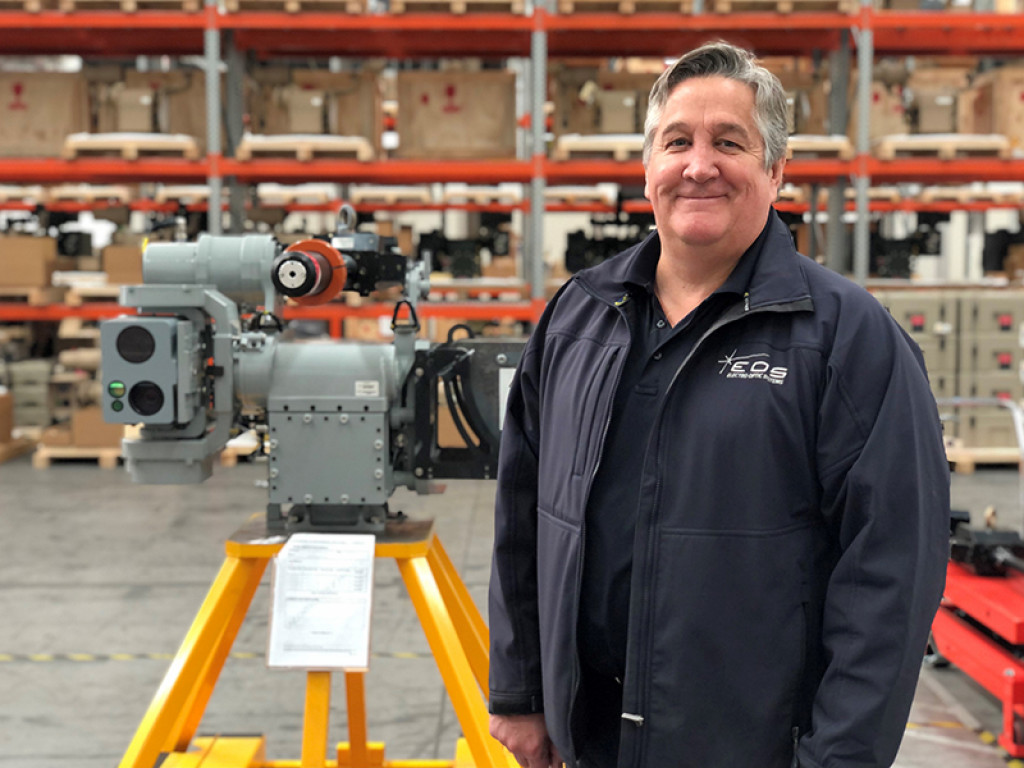
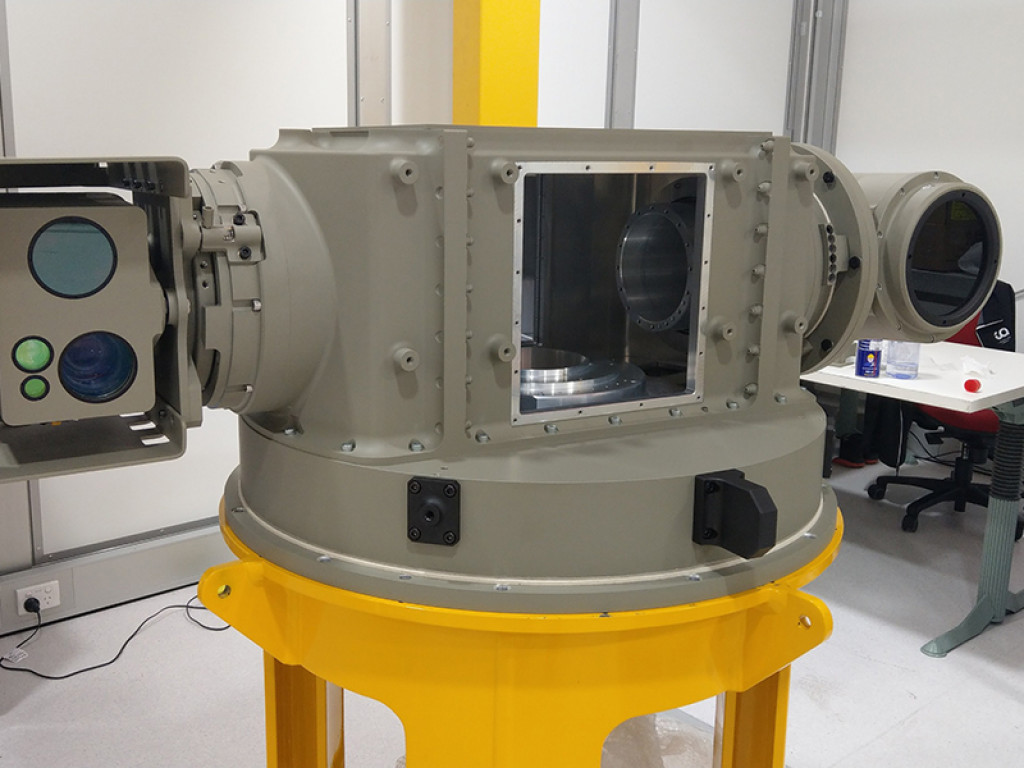
GLOBAL SERVICE
EOS operates on a global basis covering a multitude of areas within defence manufacturing and technology. On top of the space and communications branches, EOS Defence Systems is reaching into various avenues of production that are widening the scope of the company.
“Within EOS Defence Systems we have three main product lines that we are pursuing at present,” Sanderson elaborates.
“The first are the remote weapon stations for which we are globally recognised, including our capacity for manufacturing more weapons stations than any other company in the world. Our second line is our technology and the high-quality electro-optics components that includes the directed energy systems used within our counter drone systems; those that have been built on a 37-year EOS history of working with lasers and electro optical sensors.
“The third product line we are moving into is command and control capabilities for the land environment with particular emphasis on blue force tracking.”
Blue force tracking is a military term for GPS-enabled location information provision for the identification and tracking of both friendly and hostile forces (named after the association of blue representing friendly forces). Alongside optics, detection and identification systems, area location tracking is a key and vital aspect of defence and military actions and operations, domestically or otherwise.
“The company’s current locations are primarily Australian based with the largest of its four subsidiary businesses being based in the country, with the other three being a Southeast Asian business based out of Singapore, a Middle Eastern and European business operating out of Abu Dhabi, and a North American business located in Huntsville, Alabama, as well as having an additional location in Tucson, Arizona.”
“Each of these locations is vital to EOS,” Sanderson tells us. “For example, through our subsidiary EOS Advanced Technologies, located in Abu Dhabi, we provide logistical, technical support and consultations to customers in the MENA region. We are also moving into other markets, in particular Europe.”
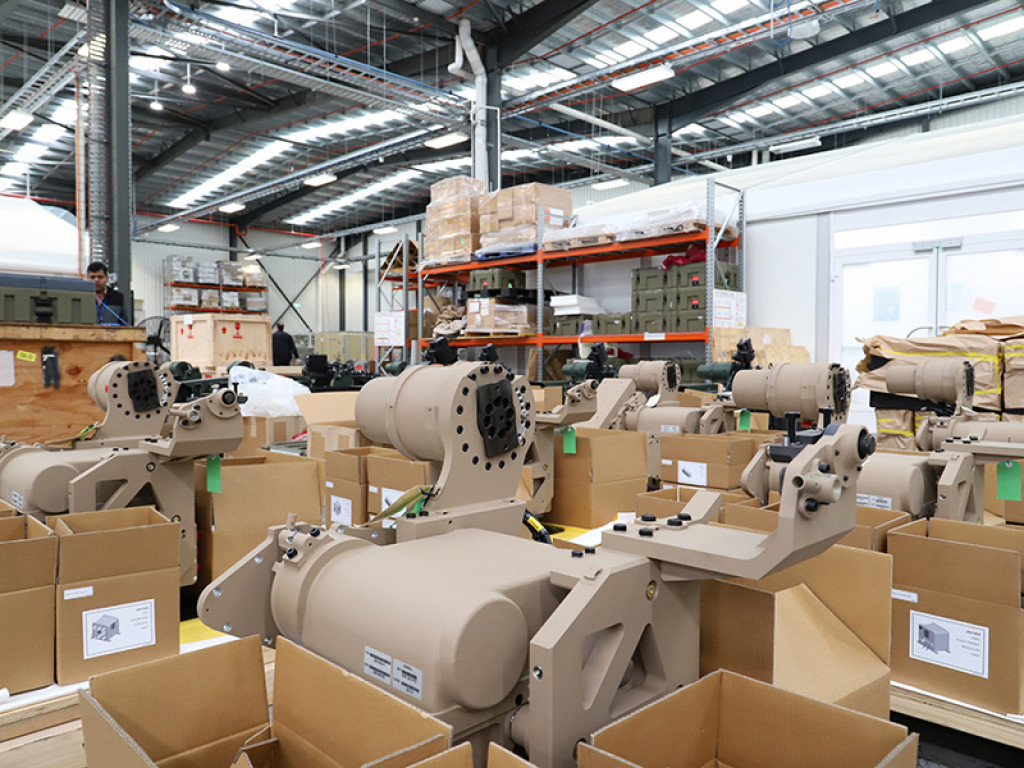
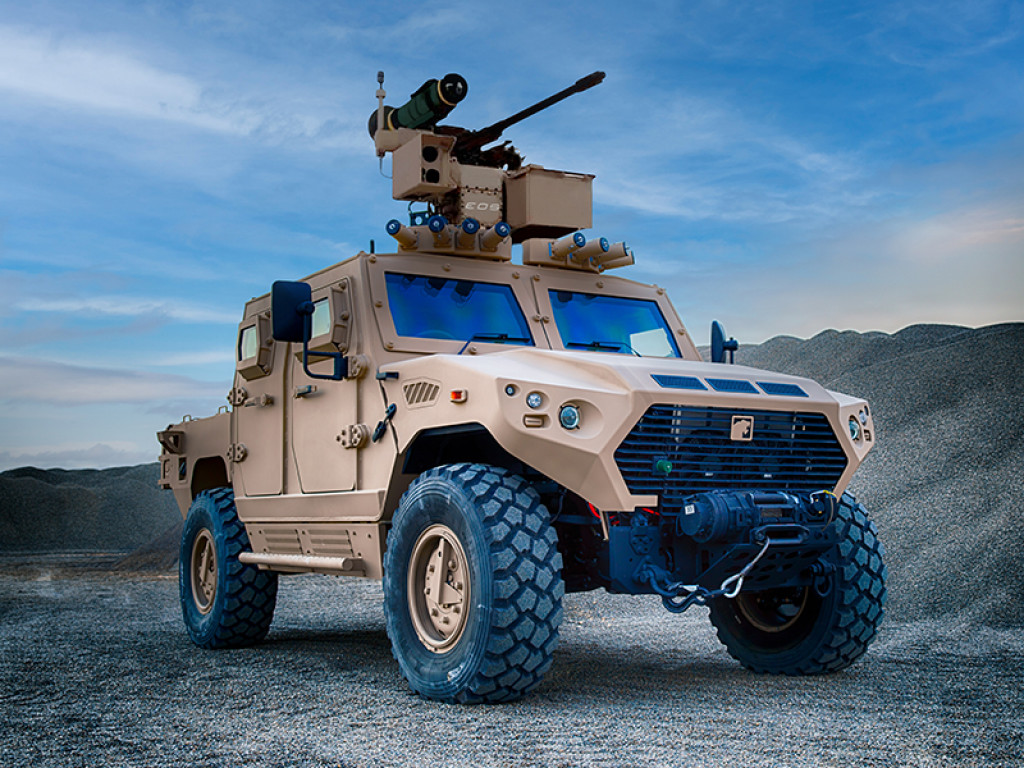
INDUSTRY AND MARKET
Within the Australian defence sector EOS Defence Systems stands apart from its industry peers in various ways. In particular EOS Defence Systems is an inherently scientific company as opposed to a technology or manufacturing entity. Sanderson elaborates.
“Although we are becoming more professional in both the engineering and the manufacturing side of our business, our technology comes from our scientific focus,” he tells us. “We design and operate technologies at cutting edge performance and use this to define our market space. We are not operating at the low cheaper end of the market. If our customers want performance, that is to say if they want real value for money, then they buy from EOS Defence Systems.”
This level of quality sets the company aside from alternative options in the market, and alongside the in-depth experience provided by EOS Defence Systems’ teams of professionals, the company strives to provide only the best.
“Another element that sets us apart, within our remote weapon station and sensor technologies, is that we are completely vertically integrated,” Sanderson informs us. “The reason for that is because we were one of the first designers of weapon stations and of the types of electronic payloads that we operate with, which were developed and designed under our initial technology programmes primarily in the United States.
“As a result, we had to invent things as we went forward with projects which means the technology that we specifically operate, and that we manufacture, is all within our control. Each of the IP areas belong to us and therefore we can manage the error budgets better than any external body or individual.”
EOS Defence Systems also operates a very detailed company strategy. To somebody outside the company it may look somewhat contrasting as to its primary business branches; how do mounted vehicle weapon station sensors and control, and space debris tracking link as offers provided by a single company? And the answer is scientific development – the heart, centre and focus of each business at EOS.
“Our businesses may look diverse but involved at the core of all that we do is the key technology and market strategy that provides us to leverage,” Sanderson says. “Very high levels of technological performance in our products allows us to carve out a profitable position in the market.”
ADVANCED WARFARE
Since its inception, EOS Defence Systems has collaborated with and provided for many companies and regions of the globe. Of its more recent company events, the Alabama branch was opened in 2018 to take advantage of the overseas market and to increase service across the US, including servicing its first US development contracts. On top of this, EOS Defence Systems has maintained a focus on the Middle Eastern region, and additional technologies, as Sanderson elaborates.
“We announced last year that we were in full swing production of weapon stations currently servicing the opportunity-rich Middle Eastern market,” he tells us. “I must note our increased focus on counter drone systems. The sudden and recent explosion in interest in the ability to physically interdict drones has grown in line and in the same proportion as the realisation of the effectiveness of the drones on battlefields.
“Robotic warfare is becoming equally more widespread with the rise of autonomous technologies.”
Drones have become widely used in various industries and are an optimal tool to utilise in filming and reconnaissance. Drone military capabilities span the range of simple search and identify uses to the delivery of lethal strikes.
While drones are utilised often and in many ways, the interception and prevention of such usage becomes equally as important, especially within the realm of defence.
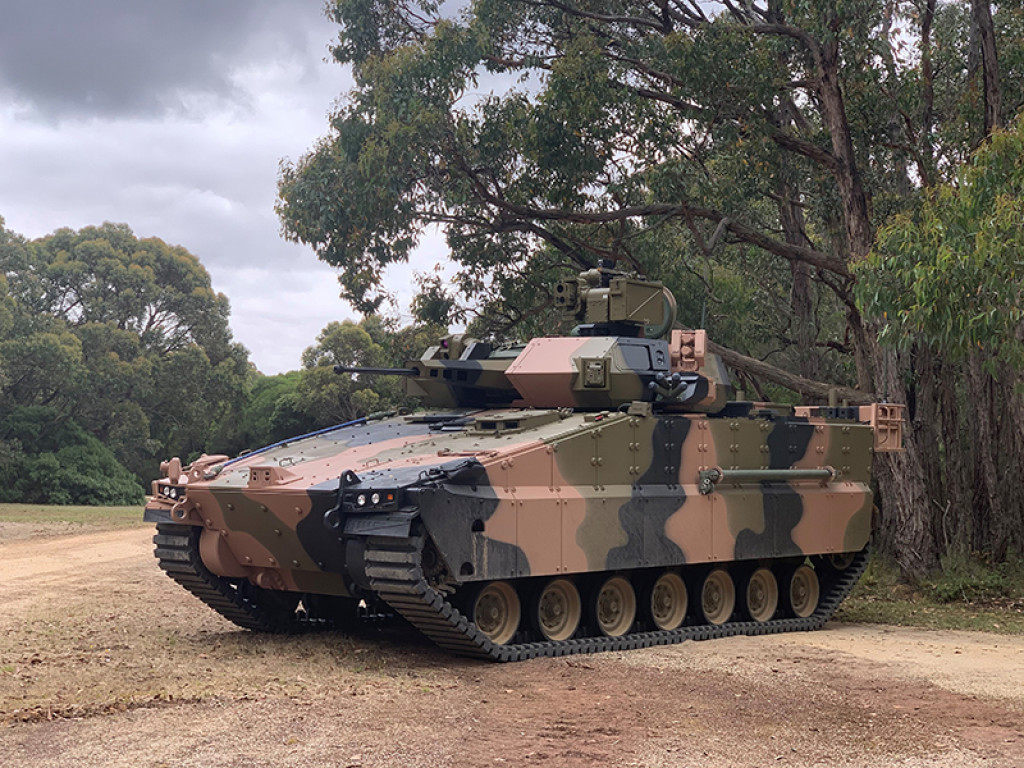
BEHIND OPERATIONS AT EOS
EOS and its board are committed to achieving and demonstrating the highest standards of corporate governance and recognition of employee, partner and individual efforts. The board continues to review its corporate governance framework and practices to ensure they meet the interests of shareholders.
“At EOS, we ensure that everybody is on an incentive package of one description or another, but there’s a growing number of people in the company with ownership of company stock and in the company itself,” Sanderson informs us. “I think that there is a clear intent on behalf of the company to see that arrangement with our workforce grow and so that everybody can enjoy and receive benefits from improved outcomes of the company over the coming years.”
This kind of people-centric operation is a natural part of EOS Defence Systems’ business. The company’s respect and recognition of both dedication and reliability ensures that those associated with its business are rewarded alongside one another so that individual employees can grow with the company’s success; after all, the people are what keeps EOS Defence Systems moving forward.
“Equally, without effective partners and supplier arrangements, this would not be a profitable business to be involved in,” Sanderson elaborates. “We are delivering technology products which are relying on being extraordinarily high quality and delivering high levels of precision and reliability.
“Therefore, we require the quality of our supply, product and parts subsystems to ensure the highest of standards. Without good fundamental relations with our supply chain partners, we would not have been able to achieve that. EOS Defence Systems has 146 direct suppliers operating into our weapon station business, and another 56 suppliers operating within energy and communications.
“I think that we maintain good relations with every single person and external business, and there is no end to the benefit we gain from having those extended relationships.”
A primary example of this is the company’s use of raw materials such as steel and aluminium that are produced and sourced locally from trusted and reliable suppliers that EOS has maintained long-lasting partnerships with.
FUTURE PLANS AT EOS
With its business divisions of Defence, Space and Communications, EOS prides itself on its provision of technologically superior products and systems. On top of taking advantage of foreign markets, namely Europe and the MENA regions, EOS is looking to expand its physical locations globally.
“EOS is also planning to launch a space link in the United States,” Sanderson tells us. “And there will be a number of other growth announcements made over the course of this year that will have a significant impact on the future of our business as well as our reach.”



